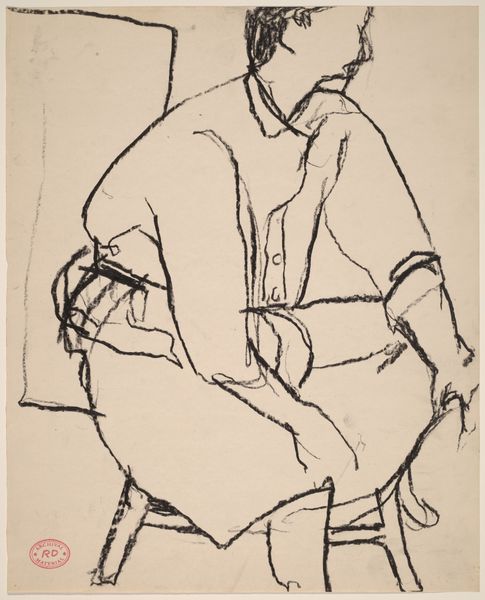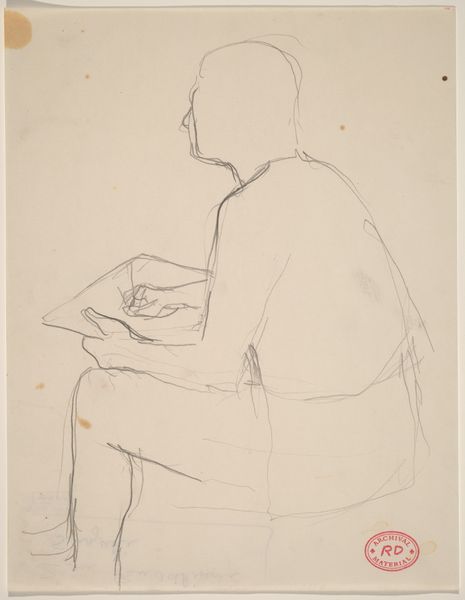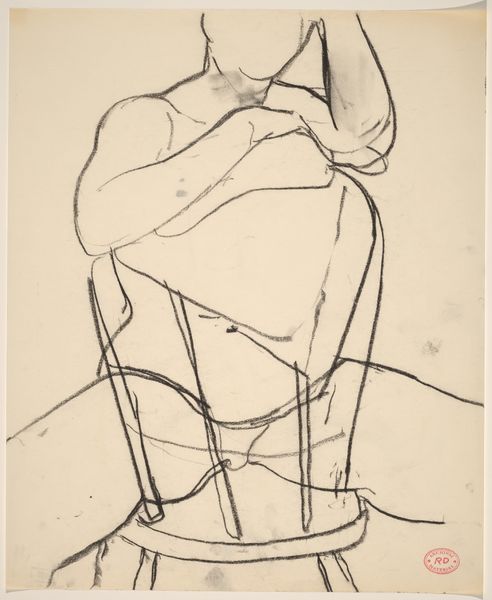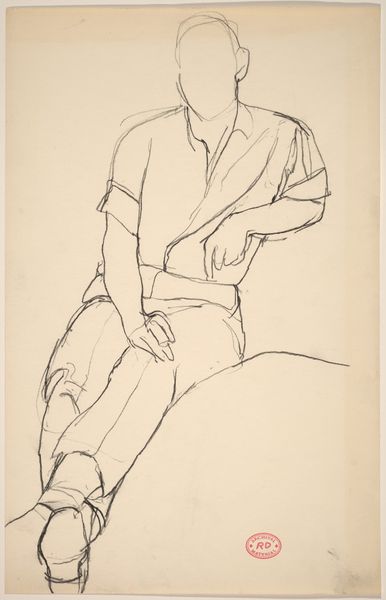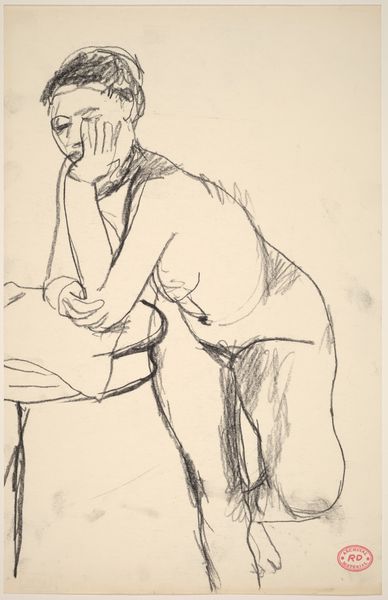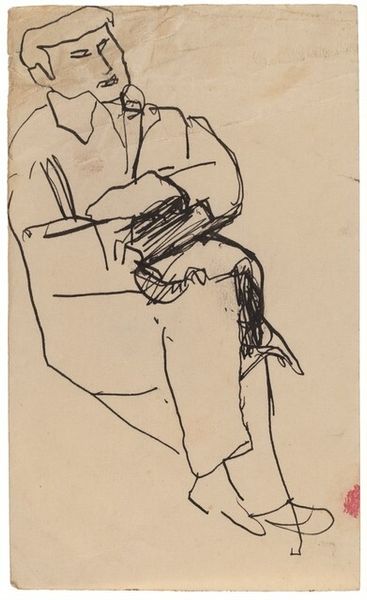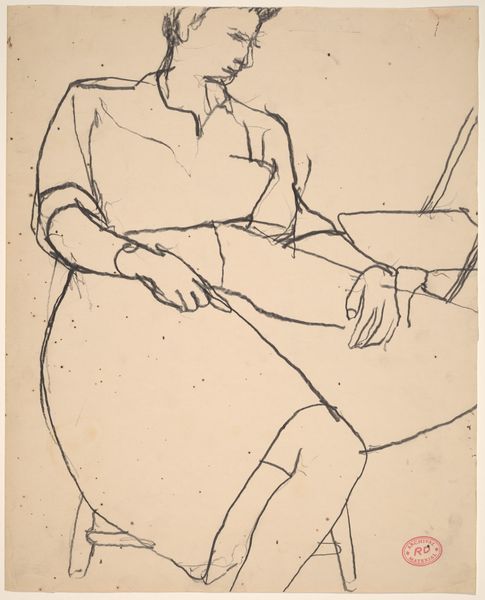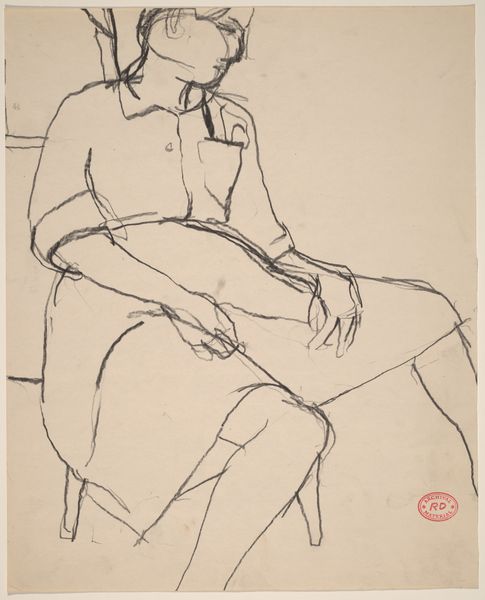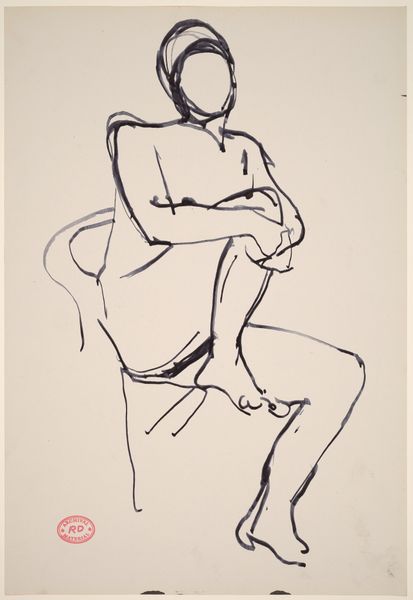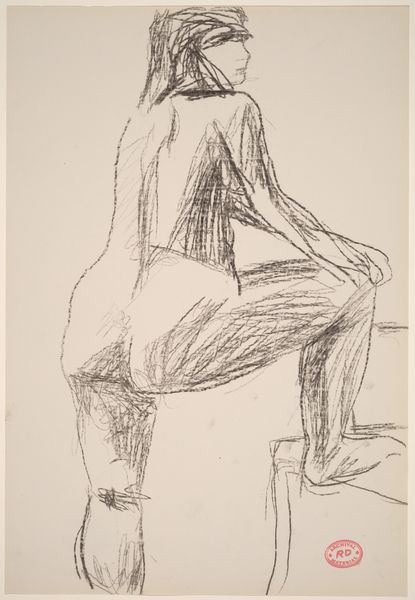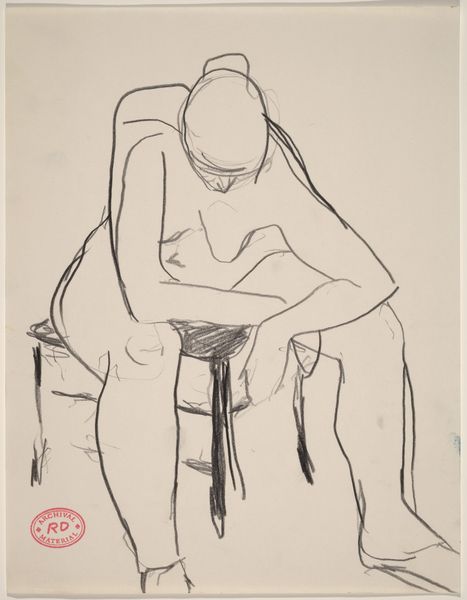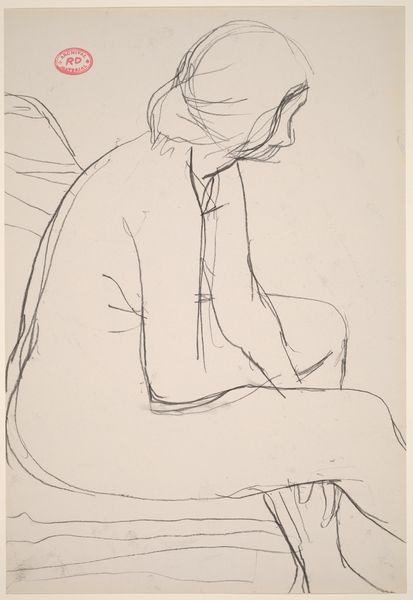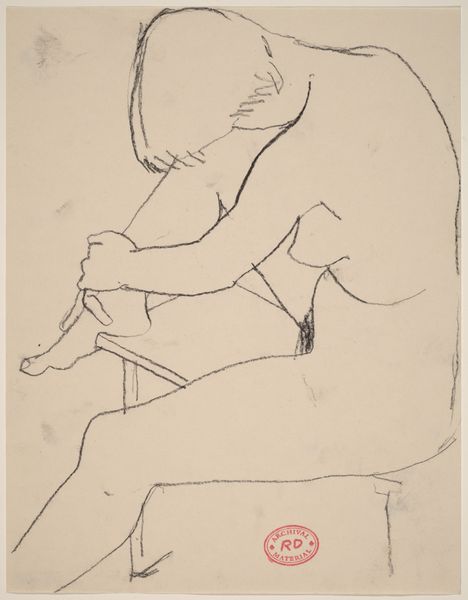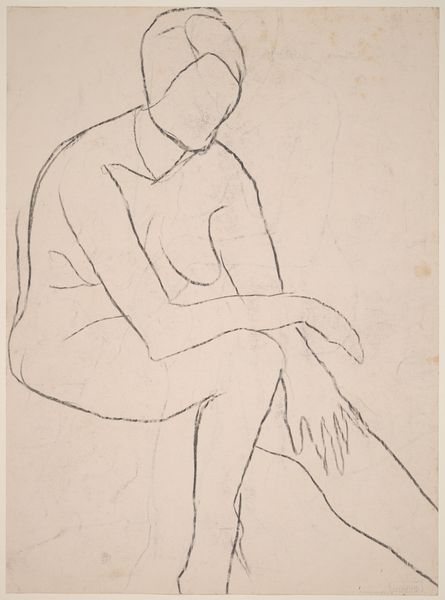![Untitled [seated woman in cuffed short sleeves] by Richard Diebenkorn](/_next/image?url=https%3A%2F%2Fd2w8kbdekdi1gv.cloudfront.net%2FeyJidWNrZXQiOiAiYXJ0ZXJhLWltYWdlcy1idWNrZXQiLCAia2V5IjogImFydHdvcmtzL2JmZTBjMGI4LTJiZWEtNDAyYi1iMmNkLWYwYmZkNWE5OTliMS9iZmUwYzBiOC0yYmVhLTQwMmItYjJjZC1mMGJmZDVhOTk5YjFfZnVsbC5qcGciLCAiZWRpdHMiOiB7InJlc2l6ZSI6IHsid2lkdGgiOiAxOTIwLCAiaGVpZ2h0IjogMTkyMCwgImZpdCI6ICJpbnNpZGUifX19&w=3840&q=75)
Untitled [seated woman in cuffed short sleeves] 1955 - 1967
0:00
0:00
drawing, ink
#
portrait
#
drawing
#
figuration
#
bay-area-figurative-movement
#
ink
#
line
Dimensions: overall: 27.9 x 21.6 cm (11 x 8 1/2 in.)
Copyright: National Gallery of Art: CC0 1.0
Curator: This drawing, made by Richard Diebenkorn between 1955 and 1967, is an ink on paper figural study titled "Untitled [seated woman in cuffed short sleeves]." What’s your first impression? Editor: Vulnerability. The lines are so spare, almost hesitant. The sitter feels exposed, not necessarily physically, but emotionally. Curator: Interesting. Given that this work emerges from a period where Diebenkorn was balancing abstraction and figuration, how do you see it fitting into the artistic currents of the time? Editor: I see it as pushing against the dominant narrative of triumphant, masculine Abstract Expressionism. There's an undeniable intimacy here. It also begs the question, who was this woman? What were the power dynamics at play between artist and model? The ambiguity invites feminist interpretations questioning historical representation. Curator: Precisely. One can analyze Diebenkorn's relationship with his models within the socio-cultural context of postwar America, examining issues of gender and representation. How does that awareness shape your interpretation? Editor: It heightens my awareness of the historical gaze, yes. But it also emphasizes the importance of art as a site of resistance and renegotiation. These simple lines almost seem to trace the outline of a woman's presence reclaiming space in the post war context. It could be said this drawing encapsulates the emerging voices of women artists at the time. Curator: I find it fascinating how such a minimalist approach—mere lines delineating form—can evoke such profound social and psychological depth. Do you think that relative artistic constraint contributes to the potency you identified? Editor: Absolutely. It allows the viewer to project their own experiences and interpretations onto the image. The absence of detail transforms the figure into a potent symbol, enabling a powerful intersectional analysis of identity, gender, and societal pressures. Curator: Well, I think our conversation shows how a seemingly simple drawing can actually be a mirror reflecting larger cultural narratives. Thank you. Editor: Likewise! It’s through this kind of interdisciplinary exploration that we give older works fresh life and new relevance.
Comments
No comments
Be the first to comment and join the conversation on the ultimate creative platform.
